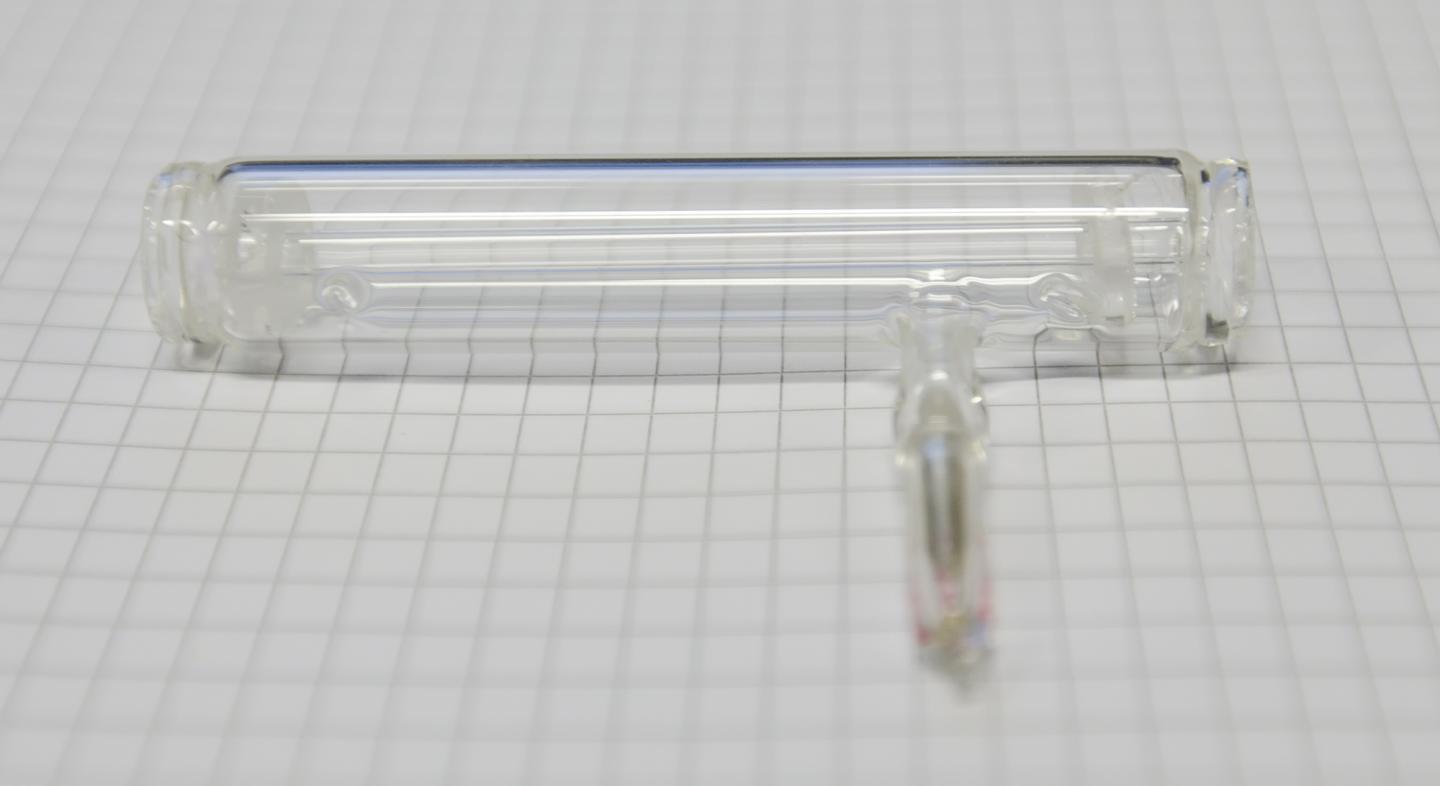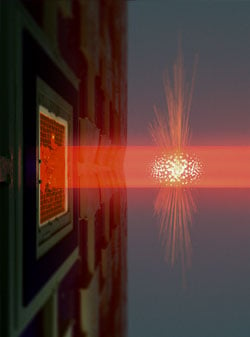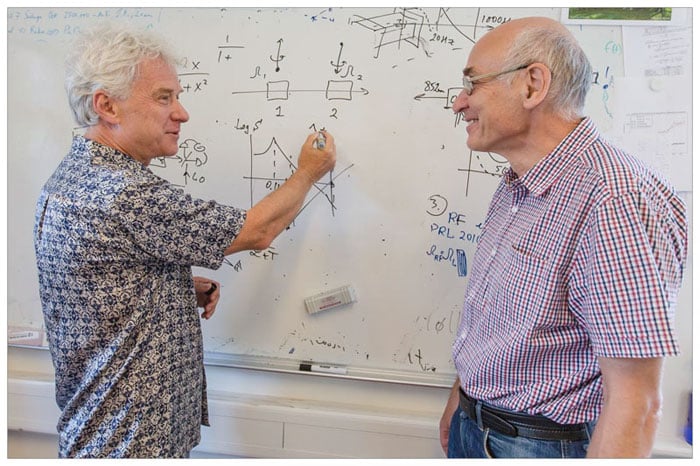
Scientists Find Way to Overcome Quantum Limit in GWDs
Researchers at the Neils Bohr Institute (NBI) at the University of Copenhagen are developing equipment that will enable gravitational wave detectors (GWDs) to monitor and carry out measurements in an eight times bigger volume of space than what is currently possible.
The work to improve the sensitivity of GWDs is based on the team’s previous observations about Quantum Back Action (QBA), a phenomenon that occurs when a light is shined on an object, leading to the object being ‘kicked’ in random directions by photons. QBA can limit the accuracy with which measurements can be carried out at the quantum level. QBA is the reason why GWDs, which operate with laser light, are not as accurate as they could be, said professor Eugene Polzik.

Cesium atoms contained in a spin-protecting cell are expected to enhance the sensitivity of gravitational wave detectors. Courtesy of Ola J. Joensen.
Polzik and his team found that it was possible to neutralize QBA if the light used to observe an object is initially sent through a filter. The team’s filter consists of a cloud of 100 million caesium atoms locked up in a hermetically closed glass cell just 1 cm long, 1/3 of a mm high, and 1/3 of a mm wide.
The team plans to apply the principles on which it based this filter to GWDs.
In theory, the measurements of gravitational waves could be optimized by switching to stronger laser light than what current detectors use. But according to quantum mechanics, that is not an option, said Polzik.
“Switching to stronger laser light will just make a set of mirrors in the detectors shake more because Quantum Back Action will be caused by more photons. These mirrors are absolutely crucial, and if they start shaking, it will in fact increase inaccuracy.”

If laser light used to measure the motion of a vibrating membrane (left) is first transmitted through an atom cloud (center), the measurement sensitivity can be better than standard quantum limits envisioned by Bohr and Heisenberg. Courtesy of Bastian Leonhardt Strube and Mads Vadsholt.
Instead, the scientists will send the laser light by which the GWDs operate through a custom-made version of the atomic filter they have developed. The QBA-evading measurement of the gravitational wave effect on the GWD mirrors will be performed by two entangled beams of light, probing the GWD and an auxiliary atomic spin ensemble, respectively.
“We are convinced this will work as intended. Our calculations show that we ought to be able to improve the precision of measurements carried out by the gravitational wave detectors by a factor of two. And if we succeed, this will result in an increase by a factor of eight of the volume in space which gravitational wave detectors are able to examine at present,” said Polzik.
In October of 2017, the collision of two neutron stars 140 million light years from Earth was confirmed by measuring gravitational waves from space, moving at the speed of light.

Eugene Polzik (left) and LIGO collaborator Farid Khalili from Moscow State University are working to improve gravitational wave detectors. Courtesy of Ola J. Joensen.
“These gravitational wave detectors represent by far the most sensitive measuring equipment man has yet manufactured — still the detectors are not as accurate as they could possibly be. And this is what we intend to improve,” said Polzik.
Polzik said that the team should be able to show proof of concept within approximately three years for what could be ”a truly significant extension."
The research was published in Physical Review Letters (doi: 10.1103/PhysRevLett.121.031101).
Published: September 2018